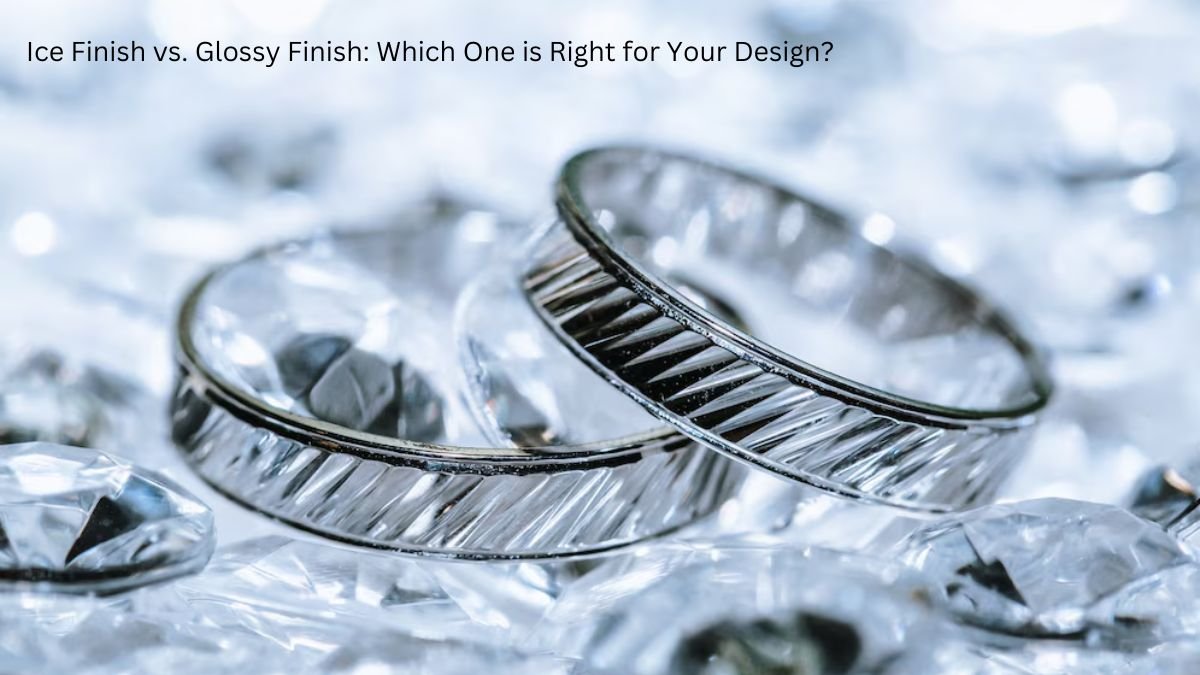Fashion
Ice Finish vs. Glossy Finish: Which One is Right for Your Design?

Introduction to Finishes
When it comes to design, the finish you choose can make or break your project. Two popular options that often come up in conversations are ice finish and glossy finish. Each offers a unique aesthetic and functional benefits, but they cater to different styles and purposes. Are you going for a sleek, modern look? Or perhaps something more subdued yet elegant? In this post, we’ll explore the nuances of these two finishes so you can confidently select the one that aligns with your vision. Get ready to dive into the world of textures and reflections!
Understanding the Differences Between Ice and Glossy Finishes
When it comes to finishes, ice and glossy options offer distinct aesthetics. Ice finish has a frosted appearance that diffuses light softly. This creates a subtle, muted effect. It’s perfect for achieving an understated elegance in designs. On the other hand, glossy finish boasts high reflectivity. It produces vibrant colors and depth through its shiny surface. Glossy styles can make spaces feel more open and bright but may also emphasize imperfections.
Texture plays a crucial role in how each finish interacts with light. Ice finishes tend to mask flaws while adding character, whereas glossy surfaces highlight every detail and create sharp contrasts. Choosing between these finishes often boils down to personal preference and the overall atmosphere you want to achieve in your space or project. Each brings its own unique charm to your design palette.
Pros and Cons of Ice Finish
Ice finish offers a distinctive aesthetic that many designers appreciate. Its subtle texture can create depth and softness in any space, elevating the overall design. One of the main advantages is its ability to diffuse light beautifully. This helps reduce glare while maintaining a modern look. Ice finishes are also less prone to showing fingerprints or smudges, making them ideal for high-traffic areas.
However, there are some downsides to consider. The surface may require more meticulous cleaning compared to glossy finishes since dirt can settle into the texture more easily. Additionally, ice finishes often don’t have the same reflective properties as glossy ones, which could limit their use in certain environments where brightness is crucial. Consider your project requirements carefully before opting for an ice finish. It excels in creating understated elegance but may not suit every application perfectly.
Pros and Cons of Glossy Finish
A glossy finish brings a vibrant shine to any design. It reflects light beautifully, enhancing colors and offering a polished look. This type of finish can elevate the aesthetics of products, making them more appealing to customers. However, glossy finishes can be tricky. They tend to show fingerprints and smudges easily, requiring regular cleaning. The reflective surface may also create glare under certain lighting conditions, which could detract from the overall experience.
Durability is another factor; while some glossy finishes are resilient, others might scratch or wear down over time. This aspect should be carefully considered based on where and how the item will be used. Glossy surfaces often evoke a sense of luxury but may not suit every style or application. Balancing visual appeal with practicality is key when choosing this option for your project.
Choosing the Right Finish for Your Design Needs
Selecting the right finish for your design project is crucial. It sets the tone and enhances visual appeal. Consider functionality first. Ice finishes offer a soft, diffused look that’s perfect for creating a calming atmosphere. They’re great in spaces where you want to soften harsh lighting or add subtle textures. On the other hand, glossy finishes add vibrancy and elegance. They reflect light beautifully and can make colors pop, making them suitable for modern designs that aim for bold statements.
Think about maintenance too. Glossy surfaces may require more upkeep to keep their shine intact, while ice finishes often hide fingerprints and smudges better. Always visualize how each finish interacts with your overall design concept. Testing samples in your space helps determine what resonates best with your vision before making the final choice.
Tips for Working with Each Type of Finish
When working with an ice finish, start by ensuring your surface is clean and smooth. Any imperfections will stand out in the final appearance. Use a high-quality primer to enhance adhesion and durability. Apply the ice finish evenly using a soft brush or roller for best results. Thin coats are crucial; layering builds up texture without overwhelming the design. For glossy finishes, prep is key as well. A polished base can elevate glossiness considerably. Sanding between coats can help achieve that mirror-like effect many seek.
When painting, use long, even strokes to avoid streaks. Allow each coat to dry completely before applying another layer—this ensures uniformity in shine and color depth. Experiment on sample boards first with both finishes. This practice helps you visualize how they interact with light and surrounding elements in your space.
Conclusion
Choosing the right finish can transform your design project. It’s more than just aesthetics; it’s about functionality and mood. Ice finishes offer a soft, diffused look that adds elegance without overwhelming brightness. They’re perfect for subtle sophistication in various applications. On the other hand, glossy finishes create vibrant reflections and enhance colors dramatically. Ideal for bold statements, they suit modern designs beautifully. Consider your overall vision before deciding. Think about how each finish interacts with light and space. Both ice and glossy finishes have their unique charms. The best choice depends on the specific feel you want to achieve in your design context.
FAQs
What is an ice finish?
An ice finish refers to a surface treatment that creates a subtle, frosted appearance. This type of finish often provides a soft glow and diffuses light, making it ideal for designs requiring elegance without overwhelming shine.
When should I use an ice finish?
Use an ice finish when you want to achieve sophistication with less glare. It’s perfect for spaces where natural light plays a significant role or in areas meant for relaxation, like bedrooms or lounges.
How durable is an ice finish compared to glossy finishes?
While both finishes are durable, glossy finishes tend to be more resistant to scratches and wear. Ice finishes can show fingerprints and smudges more easily but offer unique aesthetic qualities that might outweigh their maintenance needs.
Can I mix different finishes in my design?
Absolutely! Mixing different types of finishes can create depth and visual interest in your space. Just ensure they complement each other well; pairing cool tones with warm accents could enhance the overall look.
Are there specific materials better suited for an ice finish?
Ice finishes work beautifully on glass, acrylics, metals, and certain woods. Always consider the material’s properties before deciding on the right treatment to ensure optimal results.
What cleaning products are best for maintaining these finishes?
For both types of finishes, gentle cleaners are recommended—avoid abrasive ones that could damage the surface. A microfiber cloth works wonders at keeping surfaces clean without scratching them.

-

 Entertainment1 month ago
Entertainment1 month agoWhy Yadontube is the Next Big Thing in Online Content Creation
-

 Crypto1 month ago
Crypto1 month agoHow https://finanzasdomesticas.com/china-prohibe-las-criptomonedas/ is Redefining Digital Finance Worldwide
-

 Business1 month ago
Business1 month agoHow LetsBuildUp.org is Empowering Individuals to Reach Their Full Potential
-

 Technology3 months ago
Technology3 months agoExploring the Exciting World of Rarefied Tech: A Deep Dive into https://rarefiedtech.com
-

 Entertainment1 month ago
Entertainment1 month agoArtistic Expression Redefined: Insights fromhttps://multigrafico.com/khalil-chishtee-no-todo-el-arte-es-belleza/ Latest Work
-

 Game4 months ago
Game4 months agoUnlocking Success in Esports with Codes Etruesports: Tips and Tricks for Gamers
-

 News4 months ago
News4 months agoSure! Here are seven engaging blog post titles about “Luther Social Media Maven Keezy.co
-

 Business4 months ago
Business4 months agoDiscovering the Latest Trends and Ideas on oneworldcolumn.org Blog